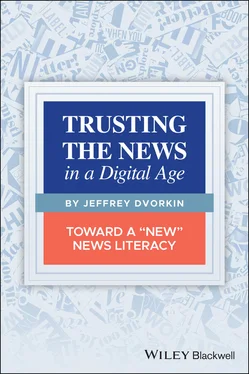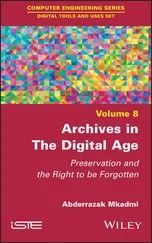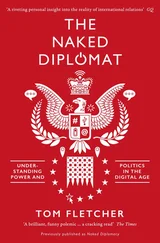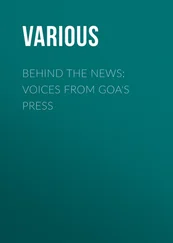Jeffrey Dvorkin - Trusting the News in a Digital Age
Здесь есть возможность читать онлайн «Jeffrey Dvorkin - Trusting the News in a Digital Age» — ознакомительный отрывок электронной книги совершенно бесплатно, а после прочтения отрывка купить полную версию. В некоторых случаях можно слушать аудио, скачать через торрент в формате fb2 и присутствует краткое содержание. Жанр: unrecognised, на английском языке. Описание произведения, (предисловие) а так же отзывы посетителей доступны на портале библиотеки ЛибКат.
- Название:Trusting the News in a Digital Age
- Автор:
- Жанр:
- Год:неизвестен
- ISBN:нет данных
- Рейтинг книги:4 / 5. Голосов: 1
-
Избранное:Добавить в избранное
- Отзывы:
-
Ваша оценка:
- 80
- 1
- 2
- 3
- 4
- 5
Trusting the News in a Digital Age: краткое содержание, описание и аннотация
Предлагаем к чтению аннотацию, описание, краткое содержание или предисловие (зависит от того, что написал сам автор книги «Trusting the News in a Digital Age»). Если вы не нашли необходимую информацию о книге — напишите в комментариях, мы постараемся отыскать её.
How to use critical thinking to discern real news from fake news in a Digital Age
Trusting the News in a Digital Age
Trusting the News in a Digital Age
Trusting the News in the Digital Age
Trusting the News in a Digital Age — читать онлайн ознакомительный отрывок
Ниже представлен текст книги, разбитый по страницам. Система сохранения места последней прочитанной страницы, позволяет с удобством читать онлайн бесплатно книгу «Trusting the News in a Digital Age», без необходимости каждый раз заново искать на чём Вы остановились. Поставьте закладку, и сможете в любой момент перейти на страницу, на которой закончили чтение.
Интервал:
Закладка:
Library of Congress Cataloging‐in‐Publication Data
Name: Dvorkin, Jeffrey, author.
Title: Trusting the news in a digital age : toward a “new” news literacy /Jeffrey Dvorkin.
Description: Hoboken, NJ : Wiley‐Blackwell, 2021. | Includesbibliographical references and index.
Identifiers: LCCN 2020033395 (print) | LCCN 2020033396 (ebook) | ISBN9781119714293 (paperback) | ISBN 9781119714422 (adobe pdf) | ISBN 9781119714408 (epub) | ISBN 9781119714415 (oBook)
Subjects: LCSH: Media literacy. | Digital media.
Classification: LCC P96.M4 D863 2021 (print) | LCC P96.M4 (ebook) | DDC 028.7–dc23
LC record available at https://lccn.loc.gov/2020033395LC ebook record available at https://lccn.loc.gov/2020033396
Cover Design: Wiley
Cover Images: © badahos/Shutterstock
1 Introduction to News Literacy
TAKEAWAYS FROM CHAPTER 1
1 What you will find in each chapter
2 What “news literacy” is and how it differs from “media literacy”
3 Why news literacy matters now
4 How we achieve news literacy
5 What we can do with news literacy
6 What happens when we are “news illiterate”
The flow of information that surrounds us all the time can be overwhelming.
From cellphones, to broadcasting, to online content, blogs, and newspapers, we are surrounded by so much technologically delivered content that it can be difficult to determine what is useful and what is not. For many people, it is more than can be handled, and we are seeing a withdrawal from engaging with the news.
Finding a way to handle this ebb of engagement in an analytic and thoughtful way is essential to our living in this contemporary world. We need to know what and who we can trust, what should be shared, and how to engage with the news in a way that serves us as students, as citizens, and as journalists.
We will be examining these issues in this book. In Chapter 2, we will look at how the definition of news in a digital age has changed
The ethical obligations of the news will be examined in Chapter 3.
In Chapter 4, we'll examine how verification is the essential element of reliable journalism.
In Chapter 5, we will examine how the news changes across different media platforms.
The role of news consumers and the interaction between the public and the news media are the subjects of Chapter 6.
In Chapter 7, we will look at bias in the media.
Chapter 8will examine the economics of news and how we arrived in this period of information saturation.
The deconstruction of news assumptions and the use of framing techniques will be examined in Chapter 9.
Chapter 10will examine how digital culture has had an impact on the connection between the news and the law.
Finally, in Chapter 11, we will look at how accusations of “fake news” are usually, in and of themselves, fake, and how news consumers, journalists, and students can manage these allegations effectively.
These changes in communication continue to be enormous in their implications. We need to look at the economic and technological conditions that have allowed these changes to occur – sometimes in a beneficial way and often with disruptions to the way things used to be.
But first we need to define what we are looking at. It is through these broad but essential definitions that we can start to place this information flow in a historical and cultural context that makes sense for us.
Definitions
What is the news? The news is defined as the timely sharing of information of some public interest, created through a journalistic process. It is presented on a variety of media platforms. The news was and is a way of sharing common concerns and questions so citizens are able to make informed and reasoned choices.
What are media? Media are the various delivery systems used to present information, cultural expression, and other communications forms. Media content is delivered on a variety of platforms – such as print, broadcasting, and online – and can be news, cultural expression (such as music and art), and opinion. News is is the informational foundation of all subsets of media.
When we talk of news literacy,we also need to discuss media literacyoverall, because both are connected.
Media platforms are the mechanisms through which we experience the world, whether it is through news, culture, or ideas. The news is one of many content constructs transmitted on a variety of media platforms. If those platforms are not properly understood, or even misused, then the content that is presented on them can also be misunderstood.
Literacyis the ability to make sense of the world and be understood through the ability to read, write, spell, listen, and speak. It is also about being competent and knowledgeable in a specified area.
Media literacyinvolves the practices that allow the public to access and to critically evaluate various media expressions. Media literacy is understanding how media assumptions about our culture operate. It is also about determining which cultural presuppositions need to be analyzed and deconstructed in order to properly understand how specific media operate.
As a result, news literacyconcerns applying similar critical thinking skills to the various content of specific newspapers, broadcast information, and online presentations.
One way to understand the need for both media and news literacy is to understand the historical origins and the economic underpinnings of how media operate. The economic consequences are critical to understanding how the news works and on whose behalf, since the news is often a first portal into the larger media landscape.
All media and their news expressions remain driven by economic and political interests. Some of those influences can be benign, such as the need to create a community of interests around local events. They can also be a part of an effort to properly inform the public about issues that have previously been unknown. This is known as “investigative reporting.” Other influences are designed to extract profits through monetizing the distribution of information that citizens might find interesting or useful. This can be problematic in certain cases.
Digital Economics
The profit motive and the inherent competitiveness of the news business have always been part of the drive to produce news and information, whether by so‐called press barons, such as newspaper chain owners Hearst and Sulzberger in the US, or by governments that wish to control information for their own political benefit and civic control. We will explore how that model of for‐profit journalism has changed and some of the reasons for those changes.
Читать дальшеИнтервал:
Закладка:
Похожие книги на «Trusting the News in a Digital Age»
Представляем Вашему вниманию похожие книги на «Trusting the News in a Digital Age» списком для выбора. Мы отобрали схожую по названию и смыслу литературу в надежде предоставить читателям больше вариантов отыскать новые, интересные, ещё непрочитанные произведения.
Обсуждение, отзывы о книге «Trusting the News in a Digital Age» и просто собственные мнения читателей. Оставьте ваши комментарии, напишите, что Вы думаете о произведении, его смысле или главных героях. Укажите что конкретно понравилось, а что нет, и почему Вы так считаете.












